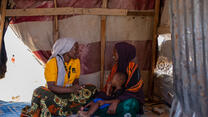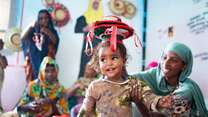The magnitude of urban disasters, high population densities, and a complex social, political and institutional environment has challenged the manner in which humanitarian agencies are used to working. Humanitarian agencies are now grappling with how to change their approaches to this reality. This desk review aims to provide an audit and analysis of existing needs assessments, response analysis frameworks and targeting approaches for use in urban post-conflict emergency response. The review found that despite the increasing number of urban responses, the development of tools or guidelines remain behind. Needs assessment and response frameworks tend to be sector or thematic specific, making it hard to identify priorities between sectors, whilst urban targeting approaches have not been translated into detailed available guidance. There is a need for development of urban tools that are inclusive, coherent, cost-effective, rigorously tested, and build on existing good practice.
Key concuslions and recommendations
The development of tools for needs assessment, response analysis and targeting relevant in urban and post-conflict contexts evidently still necessities investment. The following overarching conclusions and recommendations can be drawn:
Urban programming is taking place but tools and guidelines are lagging behind. Many multi- sector displaced population needs can be met through markets. This has implications for urban response programming, with growing interest in multi-sector approaches, the provision of multi-purpose cash grants to meet all manner of needs, and targeting based on ‘multi-sectoral’ economic vulnerability. However, development of tools or guidelines to support this is lagging behind. For example, frameworks tend to be sector and/or thematic specific, making it hard to identify priorities between sectors, whilst targeting approaches that have been invested in the MENA region have not been translated into detailed guidance for the sector.
With this in mind, urban developed tools and approaches should take into consideration the opinions and needs of key stakeholders (such as governing bodies, employers and service providers) as well as hosting, non-displaced populations. As displaced population urban programmes increasingly support non-displaced populations and local government structures and service providers that facilitate access to basic needs, the inclusion of these actors in assessments, response analysis and targeting processes is required.
There is a need to move forward with developing and standardising urban tools on the basis of tried and tested approaches, creating templates for tools that can be tailored per context. In the food security sector, a follow-up of a desk review of urban tools concluded that deliberative tool development, field testing and standardisation (especially harnessing the skills and approaches of various agencies) was still lacking, compared to the undertaking of desk reviews and cataloguing (Nyemah 2015). It is important to take stock of what exists but there is a need to go beyond this, to take action to fill the gaps identified.
Urban needs and response analysis tools and approaches developed have to be coherent due to their interdependency in as much that most of the information required for good response analysis and targeting can be collected in needs assessment data and operational contextual analysis, especially that related to the political economy and power dynamics. Ensuring that these approaches and tools relate to one another could result in a more cost-efficient approach. For example, as stated by FAO ‘Improved Response Analysis and Planning is itself limited by the quality of situational analyses and needs assessments’ (FAO 2011a: 12), and it can be supposed that targeting methods are also limited in this regard.
Investment in assessments, response analysis and targeting must strike a balance between accuracy, timeliness and cost. Although this is not an urban-specific recommendation, it is particularly valid in urban humanitarian contexts since the dynamism of urban contexts and highly mobile urban populations (such as refugees) demands the use of tools that enable quick decisions. Ensuring that there is availability of sufficient, updated, good enough information regarding the needs, gaps and priorities and immediate future trends following any shock can be a challenge. ACAPS reviews of four recent disasters (Nepal, Syria, Nigeria and Ebola-affected countries) indicate varieties of information gaps (Benini et al. 2016). However, compilation of data on needs is a time consuming and costly process that can prevent a rapid response. Similarly in the case of targeting in urban areas, good approaches take time, resources and good preparedness (MacAusland and Farhat 2013). Efforts to develop approaches based on the extensive household surveys or proxy means tests can improve objectivity and perhaps also accuracy but is very costly and time consuming, which must be taken into consideration when deciding approaches. In their report Benini et al. propose that such compromise may be the best approach: ‘if an assessment covers the areas affected (and the affected social groups living there), speaks to key concerns of preserving life and dignity, enables comparisons by areas, social groups or sectors, and is available within useful time, then its information is sufficient’ (Benini et al. 2016: p.13).
Monitoring and evaluation processes must capture evidence of effectiveness, efficiency and relevance of new urban tools and approaches to improve the uptake of response analysis and of new targeting approaches in urban contexts. The contribution of these tools and processes must be measured in terms of the extent to which they improve the overall effectiveness of responses. Humanitarian evaluations should include a reflection of decisions relating to programmes implemented, response analysis processes undertaken and targeting approaches (timeliness, cost and inclusion and exclusion errors) to enable this valuable advocacy and awareness raising.
Specialist organisational leadership in coordinating need assessments, response analysis and targeting approaches in complex, protracted post-conflict urban contexts is required. This not only ensures that specialist resources from organisations are utilised, but also to ensure that what is ‘good enough’ is applied. This is already happening in an ad hoc manner with UNHCR taking a lead in the development of targeting approaches based on economic vulnerability and in coordination with WFP to align this with targeting approaches for food assistance. In urban displacement contexts they are therefore a natural stakeholder to take the lead in such coordination.
Community awareness of urban tools and approach development could be improved to harness cross-fertilisation, piloting and application of new approaches. Despite warm and timely responses from the IASC and gFSC in undertaking this desk review, a challenge was faced in accessing sufficient information related to ongoing and/ or planned work in urban post-conflict contexts. The authors are in favour and see the benefit of specialist groups undertaking specific pieces of research and development, but would encourage greater transparency via discussion groups and learning portals, such as ALNAP’s urban portal.



